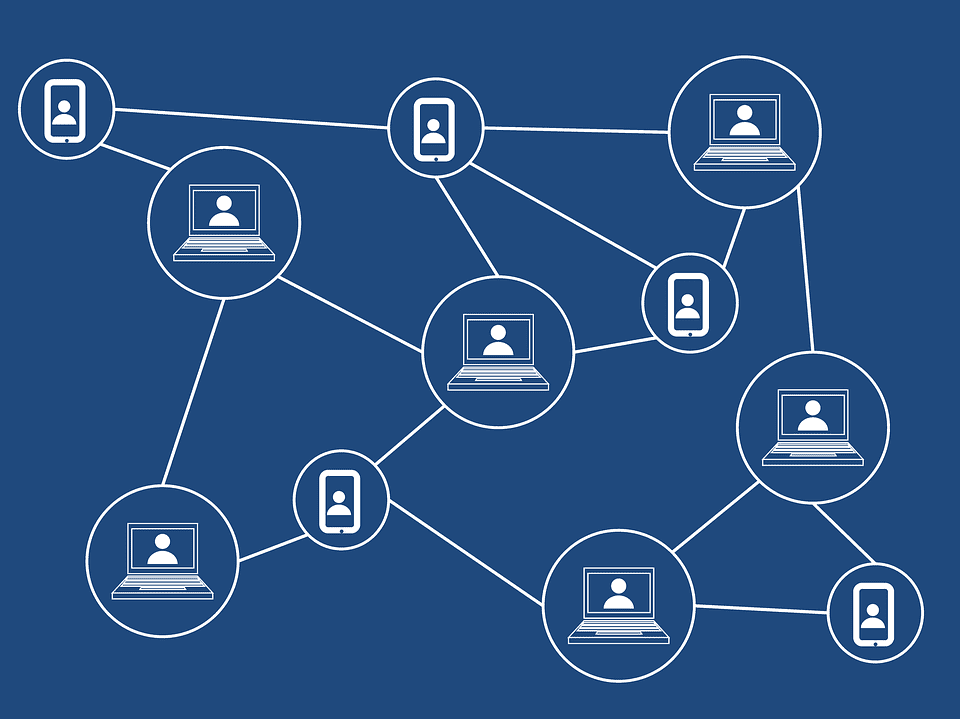
(via Creative Commons)
A Donald Trump impersonator mugging for the cameras inside a fake Oval Office stole the show at this year’s London Book Fair. The over-the-top promotion for the thriller The President Is Missing, co-written by James Patterson and former U.S. president Bill Clinton, may have captured the lion’s share of media attention, but behind the scenes, attendees were engaged in discussions around blockchain technology and how it will revolutionize the way publishers and authors are paid for their work.
Blockchain has become a buzzword most often associated with cryptocurrencies like Bitcoin, but that’s only one of its many applications. The underpinning layer of technology is open-source – meaning that data required for online transactions is distributed across a network rather than being stored on a central computer by a single owner. Essentially, it creates a list of secure digital records, or blocks, that cannot be modified. As an example, money e-transfers must now go through a third party like a bank, but blockchain eliminates that need because its “digital ledger” is spread out across a web of computers. Airlines and courier companies have been testing the technology’s ability to streamline supply chains. Walmart hopes to improve food safety by using the technology to more quickly identify the suppliers of contaminated vegetables.
As chair of The Writers’ Union of Canada and CEO of a supply-chain software company, author Eric Enno Tamm has given much thought to its publishing-related applications. He sees the potential to increase trust and transparency in supply chains but believes there’s a real opportunity to improve how content owners handle licensing, contracts, owner authentication, and payment – a model that Tamm says is currently broken given the ongoing legal disputes over fair use of copyrighted materials in the educational sector.
Tamm says that blockchain could also be attractive to self-published authors who have eschewed traditional publishers and chosen to distribute their titles directly via e-retailers like Amazon or Apple. The Alliance of Independent Authors released a white paper at the London Book Fair sharing its perspective on how blockchain could place “authors at the head of the payment chain.” The paper identifies opportunities for authors to easily receive micropayments from readers through direct sales, subscriptions, and crowdfunding without third-party involvement.
“With blockchain, there aren’t these large intermediaries taking fairly large chunks of your royalty payments,” Tamm says. “Blockchain also has the promise of being a powerful tool in terms of being able to authenticate that your title belongs to you and you have rights. I think it has potential to disrupt the digital publishing space.”
Access Copyright CEO and president Roanie Levy has been following blockchain closely for several years. The non-profit organization – responsible for collecting and distributing royalties for the copying of licensed works – was intrigued by its promise to reduce piracy and to increase the speed and seamlessness of payments to copyright holders. This summer, Access Copyright built a rough proof-of-concept, dubbed NFluencer.
The prototype allows a reader to recommend an ebook to another person, who then receives a complimentary preview of the title. If the second person pays to read the rest of the book, pre-assigned royalty amounts would flow automatically back to the creator or publisher and to other pre-designated contributors such as illustrators or cover designers. The original recommender would also receive some kind of award or incentive.
“It was so easy to build and to deploy, and we could definitely see how blockchain was going to transform the value exchanges around content,” says Levy. But that ease revealed another problem, which Levy says made them “really fearful.”
“What we saw was potentially a future where the game of Whac-a-Mole that we now play on the internet – you’ve got one infringing site, you take it down, and another one pops up – is going to be on steroids in the blockchain world,” she says. “Who’s to say that the person claiming to own the rights to this book is in fact the rightful owner?”
The Access Copyright team began looking at blockchain experiments in other creative sectors such as the music industry, which grapples with similar licensing issues, and discovered that most were using a “blind-faith or misplaced-trust approach” to the technology, where anyone could identity themselves as a copyright holder. “It’s going to be easier to hide the fact that you are transacting with work that you do not own,” Levy says. “The good news is that the essence of blockchain technology itself, with its distributed ledger that is public and auditable, should be the basis to actually solve this problem.”
In October, Access Copyright launched Prescient Innovations, a separately incorporated lab dedicated to further investigating blockchain and other technologies as rights-management solutions. Prescient will bring in tech experts and other creator associations as collaborators. Its first project is an open, transparent, and auditable distributed ledger that will address the problem of blockchain owner attribution they identified with the NFluencer prototype.
“The technology itself is still relatively new, but advancement is happening super quickly and it’s important to stay involved at the beginning and not wait for things to settle down before wanting to jump in. It may be too late by then in terms of being able to influence its direction,” says Levy. “Blockchain will present incredible opportunities, but what is absolutely vital is that creators and publishers get involved at the beginning.”

 Contact us via email
Contact us via email
